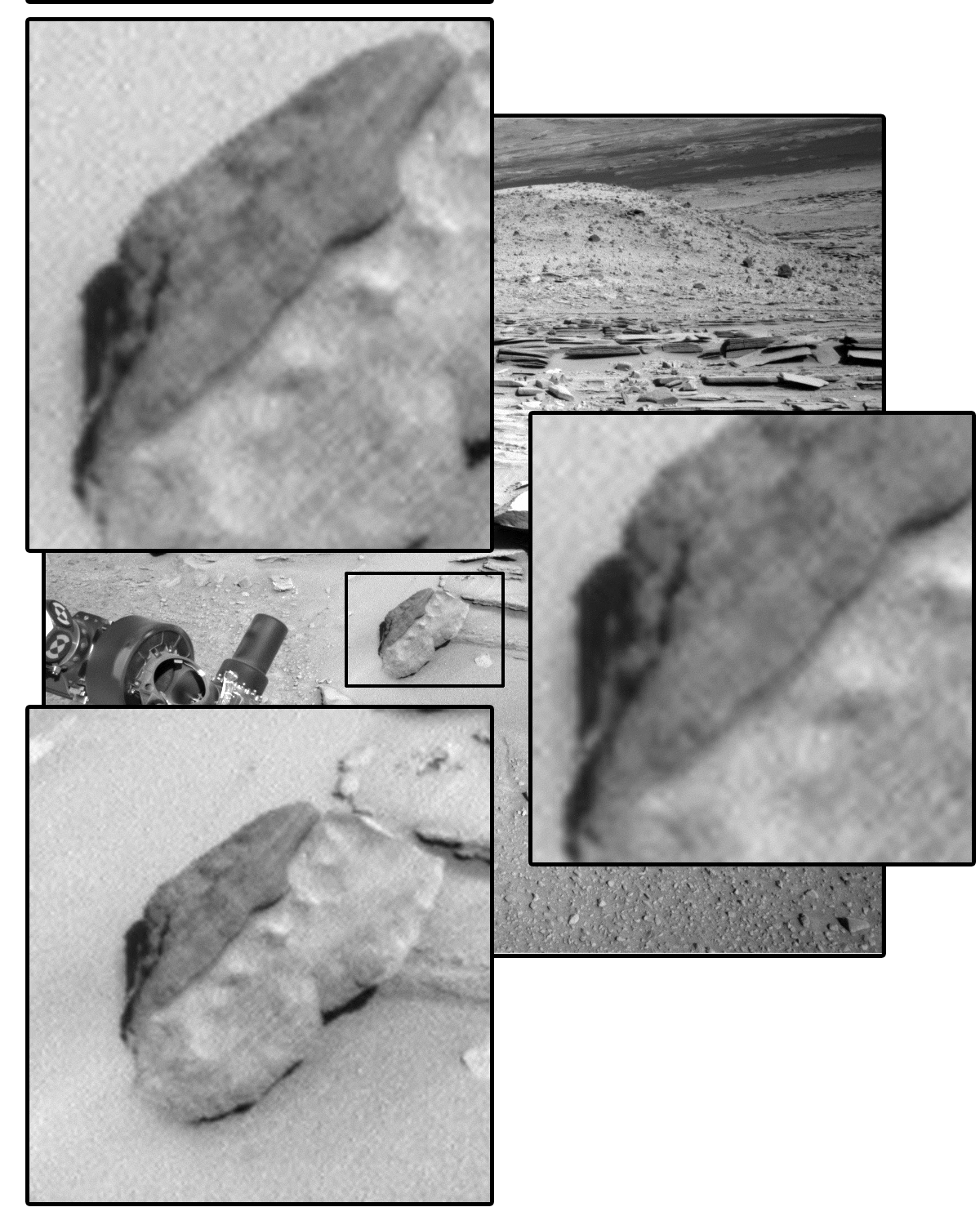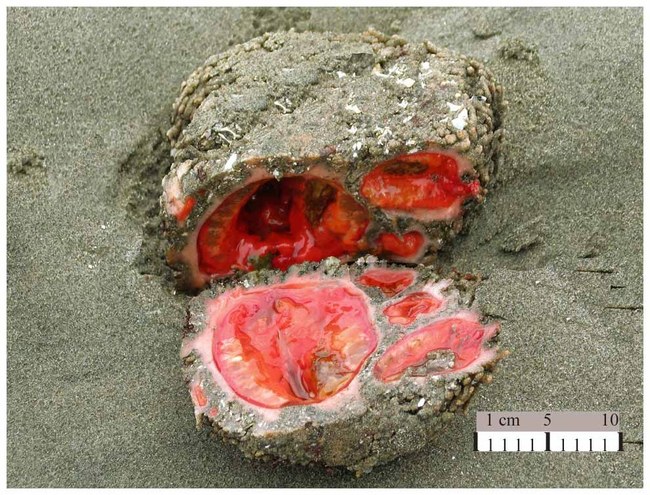It looks like you're using an Ad Blocker.
Please white-list or disable AboveTopSecret.com in your ad-blocking tool.
Thank you.
Some features of ATS will be disabled while you continue to use an ad-blocker.
share:
originally posted by: funbox
a reply to: Char-Lee
interesting plumes in that article ? must have missed that one, the article goes on to say they hung around for ten days , quite a long time for material cast up by a meteorite to hang about for , given that wonderful suspending power of the atmosphere
funbox
You misunderstand the properties of Mars itself! The atmosphere is very tenuous, for sure, but the particulate mass is also very low - Martian dust is like Talcom powder - extremely low mass. So what seems improbable here on Earth Is totally possible on Mars.
originally posted by: tigertatzen
a reply to: MarsIsRed
Oh, no worries at all...I think we're all just very passionate and sometimes that translates to aggression via the typed word. I am no different, so my apologies as well if I came across as being growly!
Cool! Still friends!!!!
a reply to: MarsIsRed
20 days.. and the wind never coerced these particulates? as below? (see discussion with Phage) if it wasn't being suspended somehow , how is it that it stayed for 20 days.. given these particulates where cast up by the leading theory of a meteor strikes , but then meteor strikes wouldn't exclude material that was bigger than talcum powder
funbox
20 days.. and the wind never coerced these particulates? as below? (see discussion with Phage) if it wasn't being suspended somehow , how is it that it stayed for 20 days.. given these particulates where cast up by the leading theory of a meteor strikes , but then meteor strikes wouldn't exclude material that was bigger than talcum powder
funbox
originally posted by: LuckyYurg
a reply to: Mianeye
Cheers for that. looking at the gigapan, it's possible that a third drip, that has dried more than the two obvious ones might be there. You'll notice the two obvious drips start in cracks or holes in the rock, there is another such crack between them, and if you look down from that crack, another drip like mark, although lighter in color, maybe it's older and not as wet. But the third one still has the look of a drip, pooled at the base
They do look like artesian wells, but the only reason that their is no liquid water on the surface is because of the low atmospheric pressure, if it came up from a thousand feet below the surface , the pressure might be enough to contain water in a liquid state, until it evaporated. If their is h2o in the atmosphere, I guess that's where it must have come from. At some point during the Martian winter, some where back down the channel it could have an ice plug .
a reply to: anonentity
could be onto something , in a similar and smaller scale fashion to the pictures of the sprayer.
that one on Skipper's site

maybe that nozzle is formed when the pressure hits the atmosphere.
funbox
could be onto something , in a similar and smaller scale fashion to the pictures of the sprayer.
that one on Skipper's site

maybe that nozzle is formed when the pressure hits the atmosphere.
funbox
edit on 10-6-2015 by funbox because: wolves & waterslides
originally posted by: funbox
a reply to: MarsIsRed
20 days.. and the wind never coerced these particulates? as below? (see discussion with Phage) if it wasn't being suspended somehow , how is it that it stayed for 20 days.. given these particulates where cast up by the leading theory of a meteor strikes , but then meteor strikes wouldn't exclude material that was bigger than talcum powder
funbox
which discussion with Phage?
a reply to: funbox
Sounds like a reasonable assumption, I wonder what the soil temperature of Mars is like . If its like Earth and the temp goes up ,as you go down . Then you could have some interesting terrestrial conditions at certain depths, away from the radiation. If in the past asteroid bombardment, fractured the rock, then you could be looking at the place where all the water is. In deep deposits, as warm liquid.
Sounds like a reasonable assumption, I wonder what the soil temperature of Mars is like . If its like Earth and the temp goes up ,as you go down . Then you could have some interesting terrestrial conditions at certain depths, away from the radiation. If in the past asteroid bombardment, fractured the rock, then you could be looking at the place where all the water is. In deep deposits, as warm liquid.
a reply to: anonentity
maybe a life form has found a way to survive such extremity's , it oozes its way to the surface to feed on highly energetic surface rocks



funbox
maybe a life form has found a way to survive such extremity's , it oozes its way to the surface to feed on highly energetic surface rocks



funbox
a reply to: funbox
Its a good bet that something live is there. Extremophiles on Earth can live in more extreme conditions than exist on Mars. But defining what constitutes " life" could be problematic. If it Universally requires DNA. I doubt whether it would be stable enough on the surface. Even on earth at twelve thousand feet , certain plants and flowers get a dose of radiation and mutate.
Its a good bet that something live is there. Extremophiles on Earth can live in more extreme conditions than exist on Mars. But defining what constitutes " life" could be problematic. If it Universally requires DNA. I doubt whether it would be stable enough on the surface. Even on earth at twelve thousand feet , certain plants and flowers get a dose of radiation and mutate.
originally posted by: funbox
a reply to: anonentity
maybe a life form has found a way to survive such extremity's , it oozes its way to the surface to feed on highly energetic surface rocks
funbox
Perhaps an abolonisc type creature!



originally posted by: anonentity
a reply to: funbox
Its a good bet that something live is there. Extremophiles on Earth can live in more extreme conditions than exist on Mars. But defining what constitutes " life" could be problematic. If it Universally requires DNA. I doubt whether it would be stable enough on the surface. Even on earth at twelve thousand feet , certain plants and flowers get a dose of radiation and mutate.
Mars's surface receives more radiation than the Earth's but still blocks a considerable amount. Radiation exposure on the surface is 30 µSv per hour during solar minimum; during solar maximum, dosage equivalent of this exposure is reduced by the factor two (2). - See more at: www.mars-one.com...
When life formed and the planet changed I think the creatures simply change also. These vents were not always there but what happened when they opened up in an animal's environment?
Since their discovery, hydrothermal vents have overthrown many theories scientists had regarding deep sea life. The temperature of the waters surrounding these vents exceed the boiling point, but the sheer pressure of those depths prevents any bubbles from appearing. Hydrogen sulphide constantly jets out of the vents, a highly toxic substance for most life forms. However, these hellish vents are often surrounded by colonies of various wildlife, most of which obviously thrive in a toxic, sunless world.
listverse.com...
a reply to: Char-Lee
interesting photos there mate , what are the chance's that two rocks on mars have similar marking/patterning's, as your rock corals ? are they some kind of sea dwelling rock filterer ? do you know if those markings on the earthly creatures are some kind of courtship markings or tubes for breathing or ??
funbox
interesting photos there mate , what are the chance's that two rocks on mars have similar marking/patterning's, as your rock corals ? are they some kind of sea dwelling rock filterer ? do you know if those markings on the earthly creatures are some kind of courtship markings or tubes for breathing or ??
funbox
originally posted by: funbox
a reply to: Char-Lee
interesting photos there mate , what are the chance's that two rocks on mars have similar marking/patterning's, as your rock corals ? are they some kind of sea dwelling rock filterer ? do you know if those markings on the earthly creatures are some kind of courtship markings or tubes for breathing or ??
funbox
These type have respiratory pores in a row near the shell's outer edge
en.wikipedia.org...
I am sure many creature of the sea would adapt if the seas were gone, many already have thick shells for protection and they could burrow under to the moisture and come up to feed. We have learned that species can adapt to environmental changes very quickly.
They are beginning to change and adapt here even now...
This rapid adaptation is occurring around the world. British researchers recently analyzed more than 2,000 animal and plant species in Britain and found that many had already made significant adaptations to a changing environment.
blogs.reuters.com...
Historically the little people they found in Indonesia (would have stood about 3.5 feet (1.1 m) in height and the dwarf elephant there, seem to have become small very quickly to adapt to the Island they were on.
This has led the discoverers of H. floresiensis to conclude that the species, or its ancestors, could only have reached the isolated island by water transport, perhaps arriving in bamboo rafts around 100,000 years ago (or, if they are H. erectus, then about 1 million years ago).
The species is thought to have survived on Flores at least until 12,000 years before present, making it the longest lasting non-modern human
en.wikipedia.org...
a reply to: Char-Lee
the remnants of the lake that once was , they certainly have the same look about them, maybe there's a whole subset of them
do you know how mollusc's on earth deal with temperature inversions such as we see on mars , when temperatures become freezing , could these critters lapse into a state of suspended animation *cryogenics*, until the sun comes up ?
im sure old Walt is hoping it does , in whatever winter-wonder-dreamland he's in
funbox
the remnants of the lake that once was , they certainly have the same look about them, maybe there's a whole subset of them
do you know how mollusc's on earth deal with temperature inversions such as we see on mars , when temperatures become freezing , could these critters lapse into a state of suspended animation *cryogenics*, until the sun comes up ?
im sure old Walt is hoping it does , in whatever winter-wonder-dreamland he's in
funbox
a reply to: funbox
My favorite subject :-)
I think lichens and lichen eating creatures would be very adaptable to the mars changes.
blogs.discovermagazine.com...

geosciencebigpicture.com...
What if a lichen grew larger and could move around?
white shield lichen

THIS is a rock eating creature

Black Tar lichen
Would we know it?

It can be difficult to believe, but these “rocks” are living, breathing organisms. Their appearance allows them to blend into Chilean beaches and avoid predators. Interestingly, these creatures have both male and female organs and can breed individually.
distractify.com...
news.nationalgeographic.com...
umich.uloop.com...
Or developed Lithotroph... is the term used to describe bacteria that acquire their energy from an inorganic substrate. Hetero lithotrophic bacteria are very rare.
Read more : www.ehow.com...
Ok I will stop
My favorite subject :-)
I think lichens and lichen eating creatures would be very adaptable to the mars changes.
One of the most successful alliances in the natural world often goes unnoticed. It involves either an alga or a bacterium that harvests energy from the sun to make its own nutrients. It shares this bounty with a fungus, which reciprocates by providing it with shelter. Together, the associates form a dual organism known as a lichen.
This alliance is so successful that lichens have colonised every continent, including Antarctica.
blogs.discovermagazine.com...

geosciencebigpicture.com...
What if a lichen grew larger and could move around?
white shield lichen

THIS is a rock eating creature

Black Tar lichen
Would we know it?

It can be difficult to believe, but these “rocks” are living, breathing organisms. Their appearance allows them to blend into Chilean beaches and avoid predators. Interestingly, these creatures have both male and female organs and can breed individually.
distractify.com...
A "devil worm" has been discovered miles under the Earth—the deepest-living animal ever found, a new study says.
news.nationalgeographic.com...
the green sea slug can get all of its energy from the sun, like a plant.
umich.uloop.com...
Or developed Lithotroph... is the term used to describe bacteria that acquire their energy from an inorganic substrate. Hetero lithotrophic bacteria are very rare.
Read more : www.ehow.com...
Ok I will stop
originally posted by: funbox
a reply to: Char-Lee
the remnants of the lake that once was , they certainly have the same look about them, maybe there's a whole subset of them
do you know how mollusc's on earth deal with temperature inversions such as we see on mars , when temperatures become freezing , could these critters lapse into a state of suspended animation *cryogenics*, until the sun comes up ?
im sure old Walt is hoping it does , in whatever winter-wonder-dreamland he's in
funbox
I know that many creatures go dormant and they are finding more that have antifreeze in their blood, some develop their own electricity but i think the sun would be used to generate heat on Mars too.
Underwater McMurdo
www.coolantarctica.com...

I think we need look at creatures like the Water Bear: Low water content of the creature is a part of this the need for little water and using salt water, well if one creature can adapt this way why not others?
Despite its looks and size, it’s the world’s ranking winner at cold survival—it can stay alive (though only for a few minutes) at -459 degrees F, which is about 1 degree above absolute zero. It does this by being one of the few creatures that can survive a drop in its metabolism to 0.01 percent of normal and decrease its water content to 1 percent.
But it can take more than cold. Hearty water bears can withstand the vacuum and high radiation of outer space for at least 10 days (humans can take no more than 10 gamma-rays of radiation; water bears can survive 6,200); the pressure of the deepest sea, some 6,000 times that of the Earth’s surface (14.7 pounds per square inch); and dehydration for nearly a full decade.
www.nwf.org...
a reply to: MarsIsRed
Yes! We can't hold our Earth out as a comparison to another planet that does not share the same atmospheric conditions, physical conditions, etc. and expect that what we know (or believe we know) to be true here will also be true there. That cookie-cutter mentality is keeping people from seeing all the wonderful possibilities out there by stubbornly and rigidly clinging to laws of science that are only known to be applicable here.
So what seems improbable here on Earth Is totally possible on Mars.
Yes! We can't hold our Earth out as a comparison to another planet that does not share the same atmospheric conditions, physical conditions, etc. and expect that what we know (or believe we know) to be true here will also be true there. That cookie-cutter mentality is keeping people from seeing all the wonderful possibilities out there by stubbornly and rigidly clinging to laws of science that are only known to be applicable here.
new topics
-
What Am I Hearing
General Chit Chat: 5 hours ago -
A Bunch of Maybe Drones Just Flew Across Hillsborough County
Aircraft Projects: 11 hours ago
top topics
-
The NIH is still sending taxpayer money to Chinese Labs to Conduct cruel animal experiments
Mainstream News: 16 hours ago, 12 flags -
FBI Director CHRISTOPHER WRAY Will Resign Before President Trump Takes Office on 1.20.2025.
US Political Madness: 16 hours ago, 9 flags -
A Bunch of Maybe Drones Just Flew Across Hillsborough County
Aircraft Projects: 11 hours ago, 7 flags -
Who's coming with me?
General Conspiracies: 12 hours ago, 4 flags -
What Am I Hearing
General Chit Chat: 5 hours ago, 1 flags
active topics
-
What Am I Hearing
General Chit Chat • 3 • : theatreboy -
And Here Come the Excuses!!
General Conspiracies • 160 • : Lazy88 -
-@TH3WH17ERABB17- -Q- ---TIME TO SHOW THE WORLD--- -Part- --44--
Dissecting Disinformation • 3632 • : duncanagain -
Who's coming with me?
General Conspiracies • 29 • : AlroyFarms -
Rant. I am sick of people saying the police are revenue raising.
Rant • 10 • : PorkChop96 -
Drones everywhere in New Jersey
Aliens and UFOs • 71 • : Wookiep -
From the MUSK-RAMASWAMY Department of Government Efficiency commission - DOGE.
Above Politics • 62 • : Irishhaf -
A Bunch of Maybe Drones Just Flew Across Hillsborough County
Aircraft Projects • 15 • : Mantiss2021 -
Remember These Attacks When President Trump 2.0 Retribution-Justice Commences.
2024 Elections • 98 • : WeMustCare -
President-Elect DONALD TRUMP's 2nd-Term Administration Takes Shape.
Political Ideology • 297 • : WeMustCare

